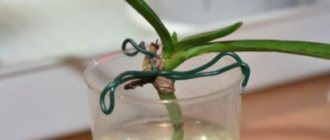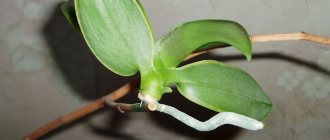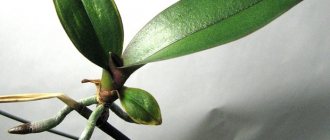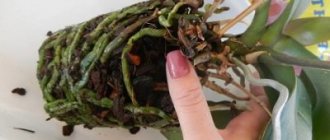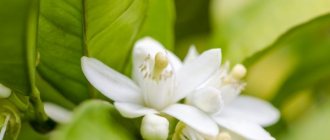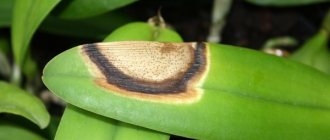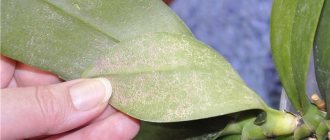How to plant a baby orchid? Sooner or later, every gardener begins to be interested in a similar question. The formation of children on the mother specimen is a natural process for the plant. Essentially, a baby is a copy of an adult orchid, but in miniature. Once matured to the point where it can be planted, it will have all the characteristics of an adult plant and will be able to grow on its own. Most often, the baby has a stem, leaves and roots at the time of its transplantation, but sometimes it can even produce a flowering shoot and bloom. It looks quite beautiful - an orchid in miniature.
Why is it important to separate the child from the parent?
A baby is a young plant that has grown on a stem. It may appear on the peduncle, trunk or roots. In most cases, young shoots grow on the peduncle. First, a compaction appears, then a bud forms, and after that a young shoot grows from it. Sometimes a daughter shoot may have its own roots, stem, or peduncle. Occasionally it happens that it blooms directly on the mother plant.
Orchid with young shoot
It is necessary to separate the baby from the mother orchid so that the parent does not die. The daughter shoot takes a lot of nutrients, so the mother plant receives them in insufficient quantities, which is why it may get sick and not survive. There are difficult situations when either a daughter or a parent can die. In this case, they need to be planted urgently.
Attention! If the baby grew up on the stem of an orchid, then under no circumstances should it be separated from the mother flower. It feeds from a common root through the stem, so it will not survive on its own.
Daughter shoot on a peduncle
Consequences for the parent
Some novice flower growers do not remove children from the mother plant, especially if shoots have formed near the roots, mistakenly believing that this way the plant will be more bushy and beautiful. But this is wrong, since the mother plant spends a lot of energy on the development of the shoot, and if the baby is not removed in time, it may simply die.
So there are two main questions:
- When should you separate the baby from the plant?
- How to do it right?
Attention! A baby that was planted on time and successfully is a new independent plant in the collection. But the gardener is often faced with a choice - a mother plant or a baby plant, if a shoot appears on the stem.
When to plant a shoot?
If an orchid has babies, then the question arises: when should they be planted? There are several main signs of readiness:
- Overgrown roots.
While they are gone, the process should not be touched. The roots must be healthy, strong, and at least 5 cm long. It is worth remembering that the more roots a child has, the more likely it is that the transplant will be successful and the young plant will survive. You should not separate a shoot if it has less than three roots.
- The right amount of real leaves .
A young orchid must grow at least 5 leaves; this is the only way it will have a high chance of survival after separation from the mother plant. Do not forget that good leaves are the plant's nutrition from sunlight and respiration. - The baby spent at least 8 months on the mother plant , but it is better if exactly a year passes after its appearance.
Do not rush to separate the baby from the mother, let it gain strength for further growth while on the mother’s plant. Growing the root system is a tedious and long process. Preparing items for replanting (tools, soil, pot).
So, the baby is ready for transplantation, now it’s time to prepare everything necessary for this exciting process:
- special substrate made from pieces of bark 1 cm long;
- sphagnum moss;
- a small plastic pot - with a diameter of 7 to 10 cm (it must be transparent);
- pruning shears, scissors or sharp knife;
- activated charcoal or cinnamon.
To prepare your own soil, you need to mix fine pine bark and sphagnum moss, you can add a little charcoal. The substrate should be well moistened, but not wet .
Read more about choosing soil and pot here.
How to properly separate a shoot?
This can be done in several steps:
- Sterilize the instrument.
- Carefully cut the baby from the mother plant. If it grows on a peduncle, then it is worth making oblique cuts on both sides of the shoot, so that the remainder of the peduncle is 1-2 cm. If the baby is formed at the base, then it is more difficult to plant it: make the cut as carefully as possible so as not to damage the roots, both on the mother plant and on the baby plant.
- The cut areas should be treated with cinnamon or crushed activated carbon. This must be done, otherwise pathogenic bacteria and infections may get into the wounds.
To finally figure out how to separate an orchid shoot, watch the video:
Basic recommendations
Before planting the baby, the sections need to be air dried for 30 minutes . The pot should be small; you can take a simple plastic cup and make several holes in it, both at the bottom and on the sides.
When can I drop it off?
You can remove the shoot from the parent only when it is ready for this. There is no need to rush: the branch should get a little stronger.
How to understand that the shoot is ready for separation
Why do orchid leaves turn yellow - how to save them
The florist will understand that the daughter is ready to separate from her parent by several signs:
- 5 leaves appeared on the young shoot. Thanks to the leaves, the plant feeds and breathes independently.
- It has grown healthy strong roots (at least three). Do not replant before the length of each root reaches 5 cm.
- The shoot should mature on the mother flower within 5–6 months. It is not recommended to separate it earlier.
A strengthened and healthy shoot can be separated and transplanted into a new pot to grow a new orchid. This is one of the main methods of propagation of this flower.
The optimal temperature for transplants is 20–25 °C, suitable air humidity is 50–60%. It is best to separate the shoot in summer or spring, but this depends on the condition of the adult orchid. As a rule, an orchid does not produce shoots in winter.
Young shoots rarely grow on an adult orchid. His appearance can be considered a stroke of luck. This will allow you to grow another flower in the room. Most often, the shoot appears in the warm season - in summer, late spring or early autumn.
Important! A child with weak roots cannot be planted; it may die. You need to wait until the roots get stronger, otherwise the shoot will not take root in the new place.
Daughter shoot near the root at the base
Is it possible to separate the baby if the orchid is blooming?
Inexperienced gardeners have difficulty noticing that an orchid has a baby on its trunk. Not every flower lover knows what to do if an orchid is blooming at this time. In this case, it is advisable not to replant the young shoot, but to wait until flowering ends. Separation of shoots is a serious stress for a flowering plant. In addition, during this period, the daughter’s roots have not yet formed, so she will not survive on her own.
Important! You cannot cut off and replant several children from one mother plant at once. This can destroy the parent.
Daughter shoots need to be separated so that they do not destroy the parent
If it grows on a peduncle
Very often there are situations when an orchid gives birth to a baby on a peduncle. How to transplant a young shoot is described below.
Detailed instructions on how to remove a baby orchid from a peduncle:
- Using a sterile pruner, cut off the young shoot, capturing part of the peduncle, but leaving 1–2 cm on the parent branch.
- The cut area for disinfection is sprinkled with crushed activated carbon and allowed to dry.
- The base of the shoot is cleared of scales to allow roots to grow.
- Expanded clay, tree bark and wet moss are placed in a plastic cup with a hole in the bottom.
- A horizontal support is installed on top that will support the plant. Additionally, you can install a vertical support to hold the stem.
- The branch is attached to the support so that its lower cut does not touch the ground. The shoot should hang in the air, this will allow the plant to take root.
- The plant is covered with a large plastic bottle or eggplant with the bottom cut off, placed in a warm place and watered regularly.
Important! You must wait until the roots grow. Then the branch can be transplanted into the ground.
This rooting method is widespread among gardeners because daughter shoots often grow on the peduncle.
Tools must be disinfected
Transplanting a plant into a separate substrate
Transplanting a new plant into a separate substrate is quite simple, but you still need to know some details. First you should prepare for this procedure. To do this, the separated cuttings (described above on how to properly trim the baby) need to be soaked in water for at least 15 minutes. If desired, you can add a growth enhancer to the water (any one is suitable, but you need to dilute it correctly - following the instructions). Why is soaking necessary? Wet roots are more flexible and less susceptible to being placed in a pot.
Now take a container for the plant. You need to lay a drainage layer on its bottom. You can use vermiculite, expanded clay or ceramic shards. Choose the option that is convenient for you. Next, the plant is lowered into the pot and held so that the leaves are higher than the top point of the pot. The substrate is carefully poured so as not to injure the roots. In this case, you need to lightly tap on the sides of the pot so that the soil is evenly laid. But do not pack the soil mixture too tightly, as aerial roots need access to carbon dioxide for nutrition. Leave the plant in this form for two to three days, after which you can water the plant.
Advice! First, the baby separated from the mother specimen must be placed in partial shade. After a few days you can install it in diffused light. But make sure that the baby is not exposed to direct sunlight, which will lead to burns.
What can be used to speed up the formation of the root system in a baby orchid? A good choice would be one of the following drugs, which can be purchased at a specialty store:
- "Ribav-Extra". The manufacturer positions the composition as a root former. It is used to treat flowers, as an anti-stress agent and to accelerate the formation of roots in young plants, ensuring their better survival. The composition is diluted on the basis that two drops of the product are needed per liter of water.
- "Zircon". This drug is universal. That is why, when diluting it, you need to make a weaker solution than indicated in the instructions, so as not to harm the orchid. For a child, it is enough to add four drops of the product to one liter of warm, settled water. The drug itself belongs to the group of phytohormones, so it can be considered one of the best feeding options. The basis of the product is an extract of Echinacea purpurea.
- "Radifarm". The drug is developed on the basis of various plant extracts. It is able to actively stimulate the growth of the root system, ensure better survival rate and guarantee the survival of plants. For an orchid, it is important to dilute the composition correctly: add one drop of the product to a liter of water.
- "Etamon." The product has positively proven itself as a stimulator of root system formation. The main advantage of the product is the presence of phosphorus and nitrogen in the composition, which are necessary for the orchid. Correct dilution of the composition requires that you add one ampoule of the product to a liter of water.
As you can see, separating a baby from an adult orchid is a simple procedure. To ensure everything works out exactly, you need to follow the recommendations given. This is a guarantee that the plant will take root and no problems will arise. Remember that you cannot separate the baby while the orchid is blooming. Wait until the flowers fall and the plant enters the resting phase. Pruning small plants from the mother specimen during the flowering period is stressful for the plant, which can lead to a deterioration in its health: lethargy, falling leaves, and stunted growth.
Tools for separating and transplanting Orchids
Baby orchid on a peduncle: examples of how to grow and root
Before separating the baby and transplanting it into new soil, you need to prepare the following tools:
- garden pruner;
- activated carbon (1 tablet) or ground cinnamon;
- alcohol for disinfection;
- a thin plastic pot with a diameter of 8–10 cm, there should be holes at the bottom;
- a sharp stationery or kitchen knife, you can use scissors;
All instruments must be thoroughly disinfected before use.
The soil must be prepared from three components:
- sphagnum moss;
- finely ground tree bark (pine);
- charcoal.
You can buy ready-made soil for orchids in the store.
For an orchid, a substrate is prepared from pine bark, sphagnum and charcoal
How to plant a baby phalaenopsis orchid?
In order to injure the orchid as little as possible when separating the baby, you need to know how to properly cut it off from the mother plant.
On the peduncle
When separating the baby from the flower stalk, 1-2 cm of the flower stalk should be left at the edges. The cut area is sprinkled with crushed activated carbon and allowed to dry for half an hour.
Basal
Such a child should be checked for the presence of a root system . If the roots have formed, they are separated with pruning shears at the junction of the baby with the mother phalaenopsis. The cut is sprinkled with cinnamon or activated carbon.
Basal baby orchid.
From the leaf axil
To properly separate the cuttings that have grown in the leaf axil, another 1-1.5 cm of tissue from the mother plant is grabbed with pruning shears, and the cut site is treated.
When propagating phalaenopsis by layering, sometimes non-standard situations arise that require resolution.
Without roots
Sometimes orchid cuttings do not form roots. In this case , it is better to wait until the roots form.
You can also immediately separate and plant in a prepared substrate, creating the conditions necessary for the formation of roots.
To the greenhouse
Four-month-old cuttings without roots are separated and planted in a substrate of fine pine bark.
The plant must be placed in a greenhouse and sprayed with water daily. This procedure can be alternated with spraying with a fertilizer solution.
It is carried out only in the daytime, and water should not get into the middle of the outlet. Care should be taken to ensure that the substrate does not become waterlogged. It should dry out within a few hours.
To root the baby, you can also use live moss, on which the separated orchid baby is placed on top.
Rooting a baby in a greenhouse.
In polystyrene foam
To root the baby using this method, cut off a small piece of foam and make a hole in it into which the base of the baby can fit. The plant is fixed and placed in a container filled with water.
The base of a small phalaenopsis should be above water , which will create optimal humidity for the formation of the root system.
To further increase the air humidity in the volume, the container with water can be covered with polyethylene or plexiglass.
After the roots have formed, the small orchid is planted in a pine bark substrate.
Basal
The basal baby does not have its own roots. Its nutrition occurs through the common stem at the expense of the maternal roots.
If such a baby has formed on your plant, then under no circumstances should you separate it . It’s just that two orchids will now grow in the pot instead of one.
Often the basal baby is formed at the site of the growth point of the phalaenopsis. As a rule, this happens when it dies. Such a baby will give rise to a new plant.
Phalaenopsis with basal baby.
How to properly separate
You need to know exactly how to remove a baby orchid from an adult plant. Occasionally, a shoot grows at the base of the parent, then the baby has roots.
How to make an orchid bloom at home
If a root baby has formed on the orchid, then the procedure is a little simplified:
- Check the presence and condition of roots. They must be strong, strong, long;
- Using a disinfected knife, pruning shears or scissors, cut off the baby and disconnect it from the roots of the main orchid.
- Sprinkle the cut area with activated carbon powder or cinnamon.
- Prepare the substrate: place expanded clay at the bottom of the pot, then mix moss and pine bark. It is advisable to water the substrate with a solution of potassium permanganate.
- Make a hole in the ground and place the cut baby there. Gently sprinkle the roots with the substrate so that they are completely covered with soil.
- Cover with a plastic bottle (greenhouse).
Important! The transplanted baby can be watered with clean water after 2–3 days, not earlier. This will protect the wounds from infections and the roots from rotting.
A young orchid will grow quickly in warmth and good humidity. It needs to be watered regularly. The soil should not be dry, but it should not be flooded either.
The shoots are transplanted into cups with holes in the bottom
What to do if the orchid has a baby?
A baby orchid is a daughter shoot from an adult plant. After separation and rooting in the ground, it will have the same color and size as the mother plant. A baby orchid is a formed flower, only of miniature size. It has aerial roots, leaves, a stem, and if it is on an adult plant, it often produces a flowering shoot.
Why did Phalaenopsis produce shoots?
At the end of the flowering period, only the flower stalk remains in the pot. If the plant is strong, it has a bright green color without any signs of drying out. After some time the following will appear on it:
- kidneys;
- lateral peduncle;
- small leaves and root system.
Thus, shoots (babies) develop - formed orchids. They can appear both on the peduncle and in the leaf axils, rhizome, or from the bud.
According to flower growers, the formation of shoots in the area of the leaf axils or on the trunk is due to unfavorable growth conditions:
- prolonged drought;
- stem injury;
- development of the peduncle directly from the center of the rosette;
- dying off of the growing point.
Peculiarity! As a rule, such shoots do not form a root system for a long time, which affects the process of rooting the plant into the substrate.
Why transplant offspring?
If the plant is provided with proper care and the most comfortable conditions, it will delight you with its flowering several times a year. If children form on a flower, this is a great success, since you can propagate and grow more than one beautiful plant at home. This is the dream of all flower growers.
It is imperative to plant a shoot from an adult flower. Otherwise, it is fraught with such negative consequences as:
- significant load on an adult flower;
- wilting of leaves;
- the likelihood of disease in the mother plant.
In some cases, when shoots have appeared, flower growers make a difficult decision: to keep the baby or the adult plant?
Where is the best place to transplant?
The separated orchid branch needs to be transplanted into new soil. Beginning gardeners should remember well how to plant an orchid shoot at home.
The orchid shoot can be transplanted into a greenhouse or polystyrene foam. If the baby has its own root system, it is planted in new soil. If it does not have roots, then it is suspended above a pre-prepared substrate and wait for the baby to take root. In both cases, the orchid needs to be grown in a greenhouse, which can be made from a large plastic bottle. A greenhouse will keep the orchid warm and moist.
There is another way to root an orchid shoot: the baby is planted in polystyrene foam. A hole is made in a piece of polystyrene foam and the base of the process is inserted there. The entire structure is placed in a glass of water and secured. You can cover it with a greenhouse or plastic wrap.
Important! The root of the baby should be under water until roots begin to appear. After this, the plant is transplanted into the ground.
The cut shoot is germinated in polystyrene foam
Care
In order for the plant to grow and develop normally, the main thing is not to make mistakes in care from the first day. After transplantation, the plant must go through an adaptation stage. The planted orchid shoots are placed in a place inaccessible from sunlight, but in a well-lit place.
It is preferable when the room is no more than 21 degrees. East and west windows work well.
After watering, the roots turn a bright green color; if the moisture evaporates over time, they become silvery. Those who like to grow orchids focus on the color of the roots just before watering.
The first feeding is carried out 30 days after the plant is transplanted. To do this, you can use fertilizer intended for orchids in half the concentration than for adult plants. Subsequently, the baby is fed once every 14 days.
When you water a plant with settled water, after a certain period of time salts will accumulate in the pot. If the moisture in your region is hard, water the soil every month by placing the pot under running water. This procedure needs to be performed for only 25 minutes to cleanse the plant.
Find out more about this process here:
Caring for a transplanted baby
Proper care will help a young orchid grow into a beautiful adult plant. The florist must provide the necessary conditions for both the transplanted child and the parent. Then the flowers will survive and will delight the owner with their beauty for a long time.
Additional Information! The orchid loves a warm shower, so in the summer months the flower can be placed in the shower for 5-7 minutes.
The condition of the transplanted appendage must be closely monitored. If the leaves turn yellow, the flower withers and dries up, it means that the grower violated the rules for transplanting the shoot or did not properly care for the plant. Secateurs and soil must be disinfected to avoid infection. The cut site is also treated with activated carbon or mustard.
Yellowing leaves are a sign of dry soil or sunburn. It is necessary to water the plant and place it in the shade. If the orchid is watered too often and abundantly, rot will form on the roots, and then the flower will need treatment. Root rot and leaf wilting can be caused by pests. Then it is necessary to use insecticides and special preparations to treat plant diseases.
The root is grown using wet sphagnum
Stimulation of root emergence
It happens that a young orchid does not grow roots. There are several ways to grow the root system on a separated child. Good methods are to float the scion on foam and suspend it above the ground. But there is another effective way to help your child develop a healthy independent root.
How to grow roots on a daughter shoot of an orchid:
- Moss (sphagnum) is soaked in water for half an hour.
- The soaked and swollen moss is rolled into a ball and tied with thread.
- They make a small greenhouse: put drainage in a plastic glass with a hole in the bottom, and then moss (sphagnum).
- A support for the sprout is placed outside, which will not touch the moss.
- The underside of the baby is treated with a root growth agent (for example, “Kornevin”), which is added to the water for irrigation. It is necessary to alternate the use of water and the product: today they water it with water, and after 2 days - with Kornevin.
- The baby is placed in the moss, pressed tightly against it, secured from below and tied to a support.
- Sphagnum moss is watered and sprayed daily.
- The entire structure is covered with plastic film or a greenhouse and placed in a bright place, protected from the burning rays of the sun.
This method can be used even for children growing on the mother plant. The wet moss is fixed to the base of the parent's peduncle and the roots of the daughter shoot are waited for.
The roots will grow no earlier than after 3 months. Sometimes the extension process can take six months.
The reason for the lack of roots lies in insufficient lighting, inappropriate fertilizer or lack of moisture. First you need to eliminate the cause, and then grow the roots. If the flower does not have enough light, you can install a phytolamp. The plant needs regular, but not excessive watering and fertilizing. An orchid will not survive without roots, so the grower should begin growing the roots of a young flower as soon as possible.
The orchid must receive enough heat, light and moisture, but their excess can be harmful.
Care after transplant
Aerial orchid roots: transplantation and other options
To grow an orchid, you need to carefully care for it. The flower is not like other indoor plants, since it comes from the tropics, so it is better to choose a different growing principle.
During the growing process, you should pay attention to the following nuances:
- Observe the mode and method of watering.
- Feed the plant during its growth period.
- Prepare the right soil and collect a quality substrate.
- Monitor the condition of the stem and root.
Caring for a transplanted orchid
Additionally, it is worth adjusting the temperature. The plant should not receive too much direct sunlight. In general, you need to create a tropical climate for the flower.
Watering
It is especially difficult to monitor the water balance of the plant and water it correctly. If there is too much water, the roots will begin to rot, so the standard watering procedure should be modified:
- Place room temperature water in a bowl.
- Place the flowerpot with the flower in the container for 15 minutes.
- Remove the flowerpot and place it on a towel. Excess moisture should be absorbed by the fabric.
- Before placing the pot in the tray, make sure that the moisture through the holes in the bottom is completely absorbed by the towel.
Note! Immediately after watering, the flowerpot should not be placed on the windowsill. You need to keep the plant in a warm place for several hours. Watering should be done when necessary, so there is no exact schedule.
Top dressing
In order for the plant to develop normal leaf mass, flowering to occur every year and babies to be planted, it is worth periodically “feeding” the plant with fertilizers of various classifications.
For fertilizing, you can use a variety of fertilizers:
- organic;
- mineral;
- to accelerate growth.
Feeding the plant during growth
Each type is used in accordance with specific instructions for doses and periods of fertilizer application. But the most popular option is mineral fertilizers, since they contain a lot of minerals and vitamins necessary specifically for orchids.
In any case, the dosage for the flower should be 1/10 of the standard. The timing of “feeding” is determined by the size of the plant and growth conditions. It is advisable to apply a certain type of fertilizer during the flowering period, and a week after - a different type of substance. The further schedule of “feeding” depends on the condition of the flower.
The soil
Many problems in the process of caring for an orchid arise if you prepare the wrong substrate for the plant. Novice flower growers even use ordinary soil for flowers. In fact, the orchid belongs to the family of epiphytes, so by its nature it must be attached to a wooden support by its roots.
Extraction from old soil
You can plant the plant in purchased soil. A floriculture store may offer several options, but it is better to prepare the substrate yourself. You need to mix dry, finely chopped pieces of bark and pieces of moss in equal proportions. Pre-soak the components in flower antiseptics to remove pests and insects.
An orchid is a very beautiful and unusual flower that requires proper care during the process of growth and replanting. You need to know how to remove the baby from the mother bush without harming the second specimen. Preparation and further actions significantly affect the condition of the plant. Proper care will help the orchid develop into a full-fledged flower after transplantation.
How to plant an orchid shoot at home?
First of all, remember that all pruning and planting procedures must be carried out with sterilized equipment. It is imperative to treat the cut site on the mother stem with brilliant green or other suitable antiseptic.
Planting in the substrate:
- As soon as the separation of the branch from the uterus has occurred, you can immediately plant it in the substrate. Experienced gardeners prefer to prepare the shoot for planting. To do this, they soak it for 15 minutes in an aqueous solution of growth hormone. This helps the plant form roots faster. In addition, moistened roots fit into the planting container much easier and are not injured.
- At the bottom of the planting container you need to lay a layer of drainage (you can take expanded clay, vermiculite or ceramic shards).
- The plant is lowered into the pot, positioning the children so that their lower leaf plates are above the ground.
- You need to pour the soil mixture in small portions, constantly leveling and shaking the container so that the substrate lies in an even layer. The soil cannot be compacted.
- It is forbidden to water the plant in the first few days, as the cut areas should dry out a little and heal. Place the seedlings in partial shade for a while, and then move them to a place with diffused lighting.
Important! The root collar of the seedling should be at the level of the edge of the planting container.
How to replant an orchid without a root?
It has already been said that the absence of roots in the shoots is not a reason to refuse a transplant. There are several ways to help grow an orchid from such a branch.
You can build a greenhouse for such a seedling or use the foam method. Landing in foam:
- Cut a small piece of foam and make a hole in it. The size of the hole should correspond to the size of the base of the process.
- Attach the outlet to the foam and place it in a container with water. The base of the seedling should be above the surface of the water to create the maximum level of humidity for the formation of rhizomes.
- You can additionally cover the entire structure with polyethylene to enhance the greenhouse effect.
When will the lateral be ready for transplanting?
Usually, several daughter branches are formed on the mother bush at once. First, they form small leaves, then roots appear.
If the root system develops poorly or does not develop at all, then it needs to be stimulated. To do this, prepare cling film, sphagnum moss and strong thread:
- Soak the moss in water. It should swell enough.
- Make a lump of swollen sphagnum and wrap a thread around it.
- Secure the resulting aggregate to the peduncle with a thread, but be extremely careful, you can easily damage the plant.
- If indoor humidity levels are low, cover the moss with cling film. Open the film every day so that the plant can breathe.
- Secure the peduncle to a support so that the mother bush does not tip over.
- Spray the moss with water daily. You can stir Kornevin in water to enhance stimulation.
After this, be patient. The formation of roots can take from 3 months to six months.
Important! It is possible to separate a daughter branch from the mother bush only when it has already formed 3-4 healthy roots, the length of which reaches at least 50 mm. There is no point in cutting the baby from the bush ahead of time, since it simply will not take root in the new pot without maternal feeding.
Growing orchids at home: when is the best time to replant?
to start breeding in the spring season.
, since after winter the plant awakens and is ready for active growth with renewed vigor. You can divide the plant during replanting or, if the roots are cramped in the pot and they come out.
How to propagate an orchid by dividing a rosette
Large, healthy orchids with 7-8 leaves are suitable for this method. Using a disinfected knife, cut off the top with 4-5 leaves and aerial roots.
. Plant the resulting shoot in a new pot. Sections must be processed.
The shoots are planted in a mixture of pine bark and sphagnum moss
. This is the most suitable soil for germination. Make sure the bark is dry, not wet.
Take good care of your escape. As soon as the roots grow, transplant them into a deeper container.
.
Separation of a daughter branch from the mother bush
It is impossible to determine in advance where and at what moment the orchid will form a baby. It is generally accepted among gardeners that these factors directly depend on the age of the phalaenopsis and its health. But we cannot ignore external conditions, such as:
- temperature regime;
- air humidity;
- amount of light.
With proper care and compliance with all the nuances of transplantation, each shoot can form an adult, full-fledged plant.
From the peduncle (from the trunk)
This option for separating the appendage is the most common. It’s easy to grow an orchid branch from a peduncle – you just need to wait for the right moment.
Phalaenopsis at the age of 5 years and older is capable of not only blooming, but also producing offsets for further reproduction. If the baby is formed directly on the peduncle, then it is called a stem baby. You need to cut it off along with a piece of the peduncle itself. It is left above and below the immediate process. A distance of 15-20 mm on each side will be sufficient.
From a branch
Stem separation is not recommended, even if this is the only opportunity to grow a shoot on an orchid. There are several important reasons for this:
- the procedure itself is very complex, even an experienced gardener is unlikely to cope with it;
- decorative and aesthetic reasons;
- the chances of causing irreparable damage to both the shoot and the mother bush are very high. They are much higher than the chances of normal survival of such a baby.
Interesting! Such difficulties signal that nature did not provide such a method of reproduction for an orchid under artificial conditions. Therefore, experts prefer not to torment the plant and carry out propagation using the methods that are embedded in the orchid’s genetic code.
From leaf axils
Children can also form at the growth point of leaf plates. The principle of transplantation here is similar: the main thing is to wait for the desired stage of growth (root formation). The shoots are formed from a dormant bud located in the leaf axils. During pruning, you should also grab a small part of the mother bush.
Under other conditions and care, peduncles form in such axils, which subsequently bloom into several inflorescences.
From the root system
Sometimes shoots can appear from the substrate, i.e. at the very base of the mother plant. These processes are called basal.
To transplant you need to do the following:
- Lightly clear the substrate at the base.
- Make sure that the baby already has roots.
- Carry out pruning in the place where the branch grows together with the adult phalaenopsis.
Important! Pruning is not difficult, but you need to be very careful. Separation of the baby from the root system should be careful, since during this procedure it is easy to damage the uterine bush.
How to trim a branch without roots?
Regardless of where the child was formed, its development may be correct and healthy, or it may have some difficulties. If your orchid has formed a branch without roots, this is not a reason to despair and quit propagating the orchid.
Growing phalaenopsis from a rootless cutting is quite possible, it just requires a little more time and skill:
- It is best to wait for the roots to form. If all the deadlines have already expired and the roots have not appeared (the branch is already 6 months old or more), you can try to separate the shoot without the root.
- You can transplant the branch into a substrate prepared in advance, while constructing a special greenhouse.
- An alternative to the greenhouse option would be to grow a rootless baby in a piece of polystyrene foam. Be sure to maintain the required indoor climate conditions.
